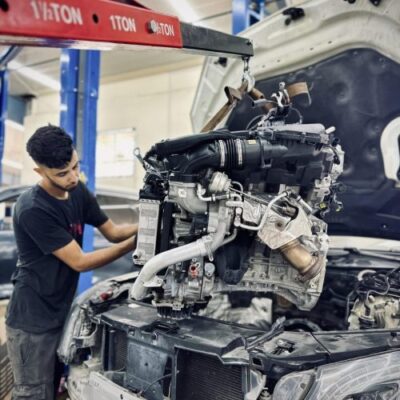By Product Type
Reciprocating Pumps
This category includes piston pumps, plunger pumps, diaphragm pumps, and others that deliver fluid via back‑and‑forth motion. Their durability and high-pressure handling make them staples in industrial settings. Reciprocating pumps dominate in applications demanding accuracy and handling viscous or abrasive fluids.
Rotary Pumps
Comprising gear pumps, screw pumps, vane pumps, and lobe pumps, rotary units offer smoother, continuous flow. They shine in mid‑viscosity fluid handling and are favored for compact design, lower pulsation, and quieter operation. Industries like chemical processing and food & beverages rely on these technologies for reliability and hygiene.
Others
Under “Others” fall peristaltic pumps, progressive cavity pumps, and specialized designs. These niche solutions are gaining traction where precise metering, shear‑free pumping, or sterile conditions matter—particularly in biotech, lab‑scale, and customized processing scenarios.
2. By Application
Oil & Gas
Oil and gas operations call for rugged pumps capable of handling high pressure, temperature extremes, and harsh chemicals. Reciprocating pumps (especially plunger and piston types) are popular for injecting chemicals, conveying crude, or operating in extraction. Emphasis on reliability and maintenance ease drives innovation in sealing systems and wear‑resistant materials.
Water Treatment
For municipal and industrial water treatment, gear and diaphragm pumps are common. Rotary types provide continuous flows for dosing chemicals, while diaphragm models handle corrosive or abrasive sludges. Growing demand for clean water and efficient wastewater recycling drives investment in specialty coatings and automation.
Chemical
Chemical processing requires precise, contamination‑free handling across a spectrum of fluid types—from solvents to acids. Rotary pumps (gear, screw, vane) are widespread, yet reciprocating diaphragm pumps remain essential for high‑pressure or hazardous, volatile media. Resistance to corrosion and flexible material choices are critical competitive fronts.
Pharmaceutical
Sterility, accuracy, and traceability define pharmaceutical needs. Peristaltic and diaphragm pumps—part of the “Others” category—dominate for metering, formulation, and sterile drug transfer. The surge in biotech manufacturing reinforces demand for hygienic, easy‑to‑clean, and modular pump designs.
Food & Beverages
Gentle handling of viscous or shear‑sensitive products (e.g., sauces, dairy) elevates rotary lobe and progressive cavity pumps. Sanitary design, clean‑in‑place (CIP) capability, and FDA‑compliance are hot product features. As consumer demand rises for quality and variety, plant operators seek pumps that simplify sanitation while preserving product integrity.
Others
Applications in mining, construction (e.g., cement slurries), pulp and paper, and agriculture rely on niche PD pumps—often diaphragm or peristaltic types—to handle abrasive, viscous, or solid‑laden fluids. These markets are ripe for rugged solutions and remote‑operation capabilities.
3. By Geography
North America
With a mature pump industry and strong presence in oil & gas, chemicals, and pharmaceuticals, North America leads in high‑performance PD pump adoption. Innovation is driven by demand for energy efficiency, digital monitoring, and compliance with tightening environmental regulations.
Europe
Stringent environmental standards and strong manufacturing sectors (e.g., automotive, food processing) propel uptake of durable and hygienic pumps. German and Italian OEMs are famed for precision engineering in reciprocating and rotary designs, while Nordic countries increasingly adopt sustainable, low‑energy systems.
Asia‑Pacific
Rapid industrialization, urbanization, and infrastructure projects fuel demand across all applications—especially water treatment, oil & gas, and food & beverage. India, China, and Southeast Asia amplify PD pump adoption in wastewater plants, petrochemical refineries, and expanding manufacturing hubs. Cost‑effective, locally produced pumps compete alongside imports.
Latin America & Middle East & Africa
Growing investments in oil & gas extraction and aging water infrastructure bolster the PD pump market. Harsh environmental conditions and remote operations necessitate robust, low‑maintenance designs. Localization and service networks are vital for market penetration.
4. Growth Strategies
Product Innovation & Diversification
Manufacturers are pushing less‑energy‑intensive designs (e.g., variable‑frequency‑driven rotary pumps), extended‑life coatings, and smart sensors. Modular, hygienic, and explosion‑proof models are being introduced to meet sector specifics.
Digitalization & Industry 4.0 Integration
Embedded sensors, predictive maintenance platforms, IoT connectivity, and remote diagnostics are key trends—especially in critical sectors like oil & gas and pharma. These features enhance uptime, reduce downtime, and cut operating costs.
Service & After‑Sales Support
Strong service networks—covering installation, spare parts, calibration, and quick repairs—are major differentiators, especially in remote regions. Service contracts and performance‑based agreements build customer loyalty.
Strategic Partnerships & Acquisitions
Let’s say large pump OEMs may team up with software firms or automation specialists to bundle smart solutions. Mergers or regional acquisitions help enter emerging markets or broaden application coverage (e.g., acquiring a sanitary pump specialist to serve food & beverages).
Customization & Localization
Tailored solutions—such as pumps designed for local power standards, climatic conditions, or language support—help manufacturers win in diverse markets. Local manufacturing or assembly also reduces cost and improves responsiveness.
5. Key Players
While I’ll avoid listing numeric standings or exhaustive rankings, the PD pump market features several prominent global OEMs known for broad product lines, strong R&D, and international service networks—names you’ll likely encounter across sectors. These companies typically offer:
-
Multiple product types (reciprocating, rotary, diaphragm, etc.).
-
Specialized offerings for regulated industries (pharma, food).
-
Digital and energy‑efficient upgrades.
-
Extensive aftermarket service operations.
…alongside regional and niche specialists focusing on specificapplications like peristaltic or slurry pumps for targeted industries.
6. High‑Potential Segments
-
Hygienic pumps for pharma and food & beverage: driven by increasing demand for sterile and sanitary processing.
-
IoT‑enabled smart pumps across all sectors: value lies in real‑time monitoring, energy savings, and predictive maintenance.
-
Low‑energy rotary designs: as energy costs and sustainability goals intensify, efficient rotary PD pumps will gain traction.
-
Heavy‑duty reciprocating units for oil & gas and mining: needed in extreme pressure or abrasive conditions.
-
Modular, customizable pumps for emerging markets: adaptability to local conditions enhances market reach.
Conclusion
The positive displacement pumps market is robust and evolving—driven by a need for precision, hygiene, energy efficiency, and digital intelligence. Reciprocating and rotary pumps anchor traditional heavy industries, while the “Others” category—peristaltic, diaphragm, and progressive cavity varieties—takes center stage in regulated, specialized segments. Geographic dynamics favor established players in developed regions and cost‑competitive, localized offerings in emerging markets.
Manufacturers that combine product innovation, digital integration, service excellence, and regional adaptability are best positioned to lead. Rising sectors like pharmaceuticals, food processing, advanced water treatment, and petrochemicals offer fertile ground for next-generation PD pump solutions—setting the stage for growth across technology, application, and geography.




